
The Business of Fashion
Agenda-setting intelligence, analysis and advice for the global fashion community.

Agenda-setting intelligence, analysis and advice for the global fashion community.
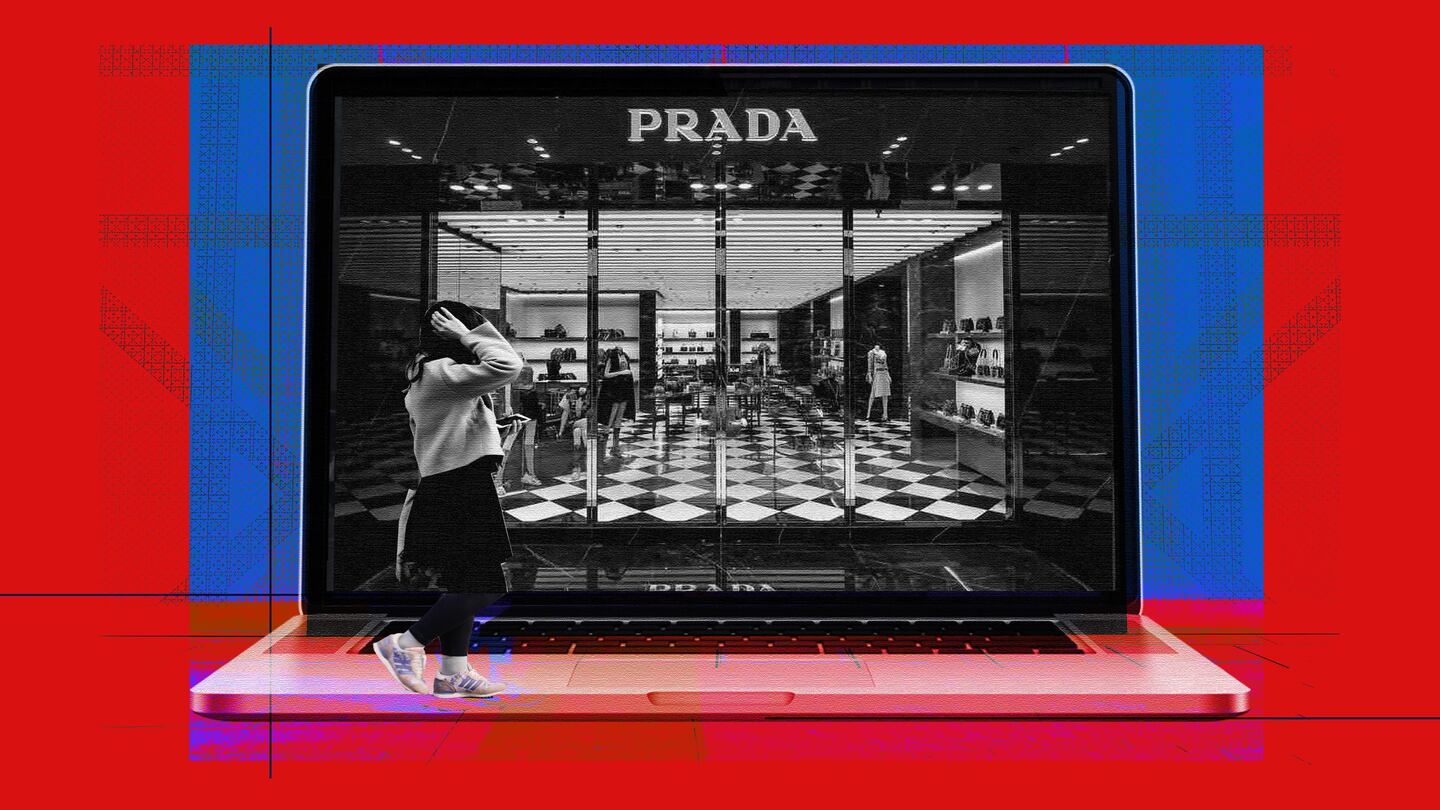
SHANGHAI, China — The ubiquitous high-end malls that populate Chinese cities have stood dormant for more than a month, with consumers in the world’s most lucrative luxury market discouraged or outright banned from venturing into public places.
At some of the boutiques, however, there remains signs of life, as sales assistants for luxury brands have joined many other industries impacted by the outbreak of coronavirus in China by hosting livestreaming sessions via WeChat or specialist platforms such as Yizhibo to turn lavish flagship stores into online shopping stages.
Though largely an exercise in customer relations, a way of keeping in touch with brand VIPs and introducing new collections to existing fans, these sessions also allow people to purchase products that take their fancy directly by communicating via the livestream. Store assistants then follow up, usually via WeChat, to complete the purchase, and dispatch orders directly from the boutiques, providing a much-needed revenue source for brands operating in the quagmire of a crisis.
Italy's OTB Group, owner of brands including Marni, Diesel and Maison Margiela, is one company that has embraced livestreaming in China, with Giovanni Pungetti pleasantly surprised by the results.
ADVERTISEMENT
[Livestreaming] will be an added weapon we can use to increase and grow when things get back to normal.
“We are reaching a lot of viewers and we have been able to make some business. We have been able to reach every corner of China,” says Pungetti, the firm’s Greater China and APAC chief executive.
Even as livestreaming has taken off as an entertainment and a commercial proposition in recent years, its use by high-end brands has so far been limited to lower price products (beauty products, rather than ready-to-wear or leather goods, for example) with a perceived cognitive disconnect between the worlds of luxury and livestreaming.
“It’s a completely different way of doing business for us,” Pungetti admits. “I always underline this to our shareholders in Italy: everything we are learning in this moment, trying to find new ways to develop business, will be very helpful for the future. It will be an added weapon we can use to increase and grow when things get back to normal.”
Alibaba has been an industry leader in livestreaming and, according to Alibaba’s Vice President and General Manager of Tmall Fashion and FMCG, Mike Hu, the coronavirus epidemic has pushed more of Tmall’s luxury partners to experiment with the technology.
Brands from Furla to Ermenegildo Zegna and Valentino have all recently participated in high profile livestreamed events through Alibaba platforms, variously featuring in-season products, see-now-buy-now technology, and interviews with brand KOLs and creative directors.
New Players, New Playing Fields
Even before the coronavirus epidemic struck at the heart of China’s luxury business, e-commerce platform Secoo had been touting the potential of livestreaming to boost online sales for luxury.
The platform, which started trading in second-hand luxury goods back in 2008, has pivoted in recent years to partner with brands such as Prada, Salvatore Ferragamo, Versace, Lanvin, and, as of March 18, Valentino, to sell new luxury products. They are a leader in livestreaming luxury e-commerce. "We see strong growth in low and mid-tier cities," explains Secoo Chairman and Chief Executive Li Rixue, who is unsurprisingly bullish about online channels.
ADVERTISEMENT
Consumers in the high-end market still value personalised in-store shopping experiences.
“Consumers in the high-end market still value personalised in-store shopping experiences, and [currently] e-commerce is used as a complement to flagship stores, not a substitute. In the future [however], this trend will be reversed and physical stores will be a complementary experience to e-commerce,” Li added, with confidence.
Though at present, e-commerce sales are estimated to make up only 10 percent of China’s $150 billion in annual luxury sales, Li expects that proportion to grow significantly, to 30 percent within the next five years. This would beat the global adoption for luxury e-commerce forecast by Bain, of 25 percent of luxury sales worldwide being completed online by 2025.
Secoo’s growth would seem to underline Li’s confidence, with gross merchandise volume (GMV) reaching 3.661 billion yuan ($522.1 million) in the third quarter of 2019, the most recent period for which data is available, representing an increase of 66.8 percent year-on-year. Total revenue reached 1.94 billion yuan ($260 million) for the quarter, an increase of 23.5 percent over the same period in 2018.
A Changing Landscape
Only two years ago, the luxury e-commerce landscape in China looked to be a battle of two platform giants — JD.com and Alibaba’s Tmall, with each opening dedicated luxury apps and apps-within-apps. That landscape has evolved quickly in recent years, with JD.com’s luxury offering, Toplife, being acquired and absorbed by Farfetch.
Today Farfetch’s localised China offering can be accessed via its own app, WeChat mini-program, or via the front page of the JD.com app. The platform is proving to be a popular entry point for many brands and boutiques who already work with Farfetch in other parts of the world and its partnership with JD.com has given it a significant logistical advantage.
JD.com, with a user base of 360 million active consumers, also has its own “luxury flagship store” offering. Though JD.com has struggled with offline controversies in recent years, and at the same time has been forced to stave off competition from new online entrants in the China market, such as Pinduoduo, it has chalked up recent wins with the signing of high-end luxury brands to its own platform.
Just last week, JD.com announced it would be the exclusive online China stockist for Delvaux, a standard-bearer of old school European luxury leather goods.
ADVERTISEMENT
“Why wouldn’t anyone buy an exceptional handbag online? This digital evolution is exciting and offers a wide range of possibilities,” says Marco Probst, global chief executive of Delvaux, of the partnership.
E-commerce in China is difficult to forecast because things are changing so fast, but Tmall is the most important one.
Like Secoo, JD.com says its strong nationwide logistics network helps its luxury brand partners reach the fastest growing consumer segment, in lower-tier cities. Kevin Jiang, president of international business at JD Fashion and Lifestyle, points to the example of Salvatore Ferragamo, which sees the unlikely third-tier city of Qujing in Yunnan Province as its third biggest market for sales via a JD.com storefront.
Alibaba-owned Tmall remains the biggest luxury e-commerce player in China, with research released last month by Ruder Finn and Consumer Search Group finding 60 percent of respondents prefer buying luxury products online via Tmall’s Luxury Pavilion (compared with 44 percent who preferred JD.com).
OTB’s brands in China have chosen to partner with Tmall for their e-commerce operations here, with Giovanni Pungetti revealing that the Italian group enjoyed "super successful" e-commerce growth in China last year, with sales doubling for their three brands. The reason they, like so many others, have chosen Tmall is down to the scale of the platform’s reach.
“Of course there are other platforms that are moving forward, as always, e-commerce in China is difficult to forecast because things are changing so fast, but Tmall is the most important one. The base of consumers they have is so huge,” Pungetti says, referring to the more than 700 million active consumers on Alibaba platforms.
Prada became the latest high-profile joiner to Tmall’s Luxury Pavilion this month. As this shows, brands with strong leverage don’t necessarily need work exclusively with one platform, with the Italian brand already inking deals with Secoo and joining JD.com through an online flagship in June 2019.
Tmall’s luxury reputation was also burnished with the October 2019 launch of the Net-a-Porter flagship store on Luxury Pavilion. This marked the beginning of operations of the joint venture (named Feng Mao) established between Yoox Net-a-Porter and Alibaba.
Partnerships have moved to strengthen tech giants in the luxury e-commerce space, effectively marginalising leading global luxury e-tailers like MatchesFashion and MyTheresa who are small in comparison to Alibaba and JD and have not offered a special tech or shopping model for the Chinese market. Domestic players are also easily squeezed by this duopoly, with the fate of Shangpin and Xiu.com sealed years ago.
Who’s Buying?
The burning issue for just about every luxury industry executive is the extent to which Chinese consumers will retain an appetite for luxury consumption in the wake of the devastating coronavirus epidemic and the economic fallout that will ensue in coming months. And it is a $150 billion dollar question.
Mixed messages have emanated from Chinese e-commerce marketplace giants about the online market more generally, with Alibaba saying revenue growth for the current quarter would be impacted by the logistical difficulties caused by China’s various levels of quarantine, first put into place on January 24 and still in place to some degree in many parts of the country.
JD.com, on the other hand, forecasted at least a 10 percent rise in revenue for the coronavirus-hit first quarter. JD.com’s Jiang says that “an increasing number of luxury brands have been in talks with JD about opening online stores since the [coronavirus] outbreak [began].”
Younger consumers might choose to replace the leisure time... with browsing and purchasing... luxury goods online.
Meanwhile, Alibaba’s Mike Hu described luxury goods sales coinciding with Valentine’s Day, at almost the peak of China’s coronavirus outbreak, as “explosive.”
But whether these factors can be directly linked to a future where consumers purchase more luxury goods on e-commerce channels due to lasting behavioural change in a post coronavirus-market remains unclear.
More broadly speaking, with offline and travel retail taking a serious battering for at least the first half of 2020, is there any hope that online luxury sales can make up some of the shortfall?
According to market observers the answer seems to be, perhaps, to some extent. It all depends on the brand, its consumer target and its willingness to experiment with new, digital ways of operating during what is colloquially known in China as the “special period.”
The categories boosted on e-commerce since the outbreak began have mainly been daily use items — groceries, medicines, face masks — with lower-priced non-necessities, including beauty products, also remaining resilient. At a time when people are worried about their health and economic futures, a significant percentage of Chinese consumers who might have purchased luxury goods in 2020 are now unlikely to do so.
Having said that, China is an enormous country made up of many different consumer segments. The previously identified growth market of lower-tier cities will be one that luxury e-commerce players continues to target, as will be China’s youngest luxury consumer segment.
Even as talk of China’s worst economic performance in the Post-Mao era circulates, China’s post-90s' and post-00s' generations (with a population of 250 million according to Accenture estimates) seem far less likely than their parents’ generation to let health or economic fears get in the way of a good time, or their luxury shopping.
These young people have been driving a trend for taking their good times online in the face of a limited ability to enjoy themselves as they normally would. Over the last month, China’s nightclubs and live-music venues have been livestreaming performances of DJs and bands on video platforms Douyin, Kuaishou and Bilibili, attracting audiences in the hundreds of thousands and earning digital tips in the millions of yuan.
China’s youth matter disproportionately for luxury. Last month, Wunderman Thompson Intelligence released a report finding 88 percent of China’s Gen-Z felt as comfortable purchasing online as offline and 73 percent felt it was “important” to own luxury branded products. And, according to Mike Hu, an “overwhelming portion” of Tmall’s luxury consumers are aged 18 to 35, with the number of consumers aged 15 to 25 growing twice as fast as those aged 25 to 36.
“Gen-Z already accounts for around 20 percent of total luxury shoppers on Tmall and the growth speed is accelerating each year,” he says. What’s more, Hu sees the drop in travel and associated luxury spending overseas as a potential bright spot for luxury e-commerce in China.
“Travel restrictions implemented by various countries will accelerate the consumption of luxury goods that would have occurred overseas to happen online,” he predicts.
These factors should give brands some hope that younger consumers might choose to replace the leisure time they once spent at the mall, or shopping while traveling abroad, with time spent browsing and purchasing their beloved luxury goods online.
时尚与美容 FASHION & BEAUTY
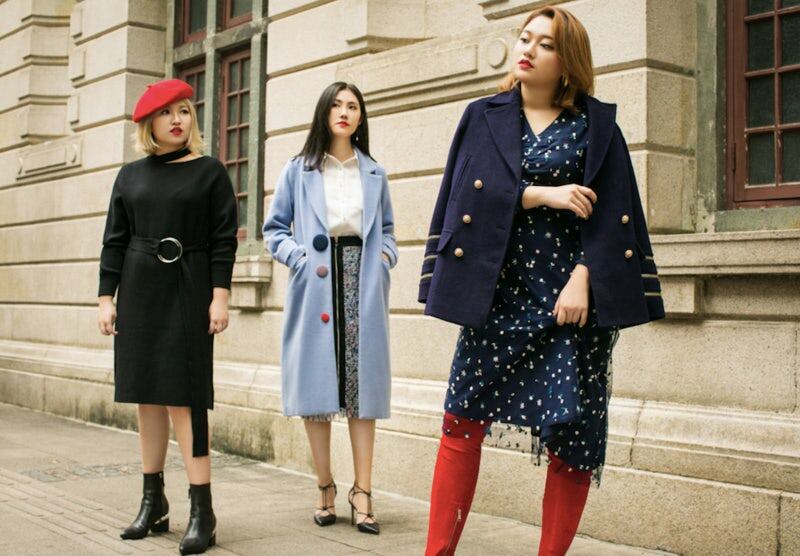
A lookbook image from Chinese plus-size brand Garden Lis | Source: Courtesy
Hopeful Signs for Plus Size Fashion in China
In a country with a growing population of overweight and obese people, China's plus size industry lags behind that in the West (which many would say is a laggard itself). Taobao has become an important sales stream for plus-size brands, with thousands of stores on the platform selling plus-size clothing and a few stand-out brands, such as Garden Lis, attracting attention and investment. Few domestic clothing giants, however, feature sizing above an XL. (Nino Tang for BoF China)
'China’s LVMH' Yet to Secure Bally Financing
Chinese clothing conglomerate Shandong Ruyi has reportedly failed to secure financing for its $600 million acquisition of Swiss luxury brand Bally, more than two years after the deal was announced. The group, which has seen financing woes exacerbated by the coronavirus outbreak, has been beset with debt repayment concerns and lawsuits after a spending spree that brought assets including SMCP Group and Aquascutum under its umbrella. (Reuters)
科技与创新 TECH & INNOVATION
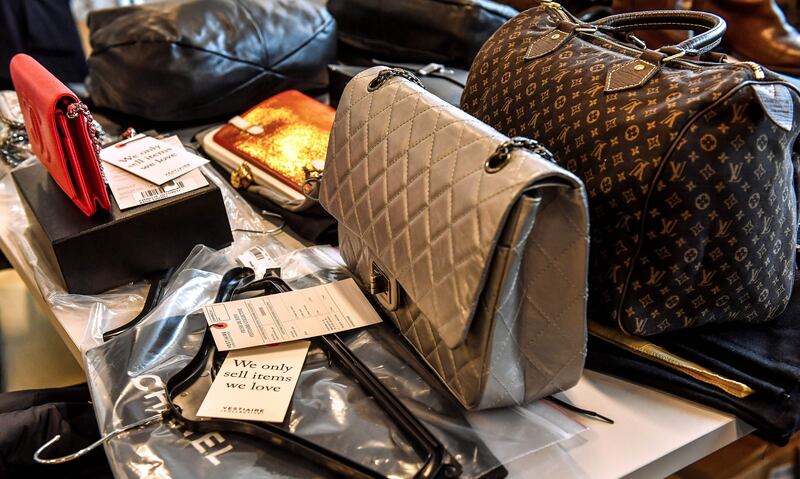
Vestiaire Collective's logistics hub | Source: Getty Images
Second-Hand Luxury Live-streaming Attracts Investment
Feiyu, a platform dedicated to B2C live-streamers selling second hand luxury products has attracted "tens of millions of dollars" in a recent A round of investment. It is one of many platforms in China that is riding a boom in audience numbers, engagement and sales on the back of live-streaming, which has stepped up to replace real world consumption and entertainment options in China as people stay home to limit exposure to coronavirus. (36Kr)
Tinder Emerges as Unlikely News Source About Coronavirus
Although dating app Tinder is banned in China, users from outside the country have been able to set their location to Wuhan and match with locals there to chat with them and find out directly from the source what is happening within the locked down city. Most people have reported feeling bored and a little anxious, but have also commented on the widespread availability of essentials in local supermarkets and expressed hope that the worst was now behind them. (Buzzfeed)
消费与零售 CONSUMER & RETAIL
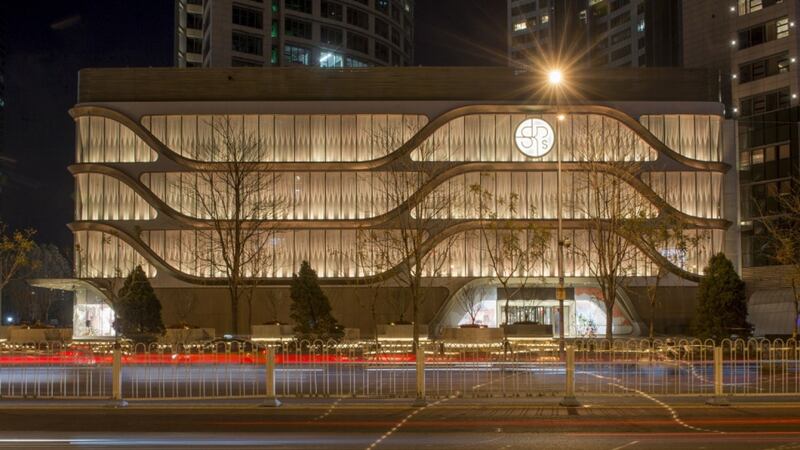
The exterior of the newly opened SKP-S in Beijing | Source: Courtesy
Department Store Sector Struggled in 2019
An analysis of the performance of department stores across China shows that 2019 was another year of decline, though the rate of closures was slower than in previous years. It has long been thought that the sector would continue to consolidate until only the strongest players with a solid retailtainment mix, good locations and management would survive. Last year, Beijing's SKP department store topped revenue rankings, earning 15.3 billion yuan ($2.19 billion). (Lian Shang)
Malls in China’s Major Cities Mainly Up and Running
Offline shopping in major Chinese cities is largely back to being open for business, with more than 80 percent of shopping malls and supermarkets in cities such as Shanghai, Beijing, Chengdu, Guangzhou and Shenyang now open. How busy they are, as customers continue to avoid public places, is another story. (Shanghai Securities News)
政治,经济与社会 POLITICS, ECONOMY, SOCIETY
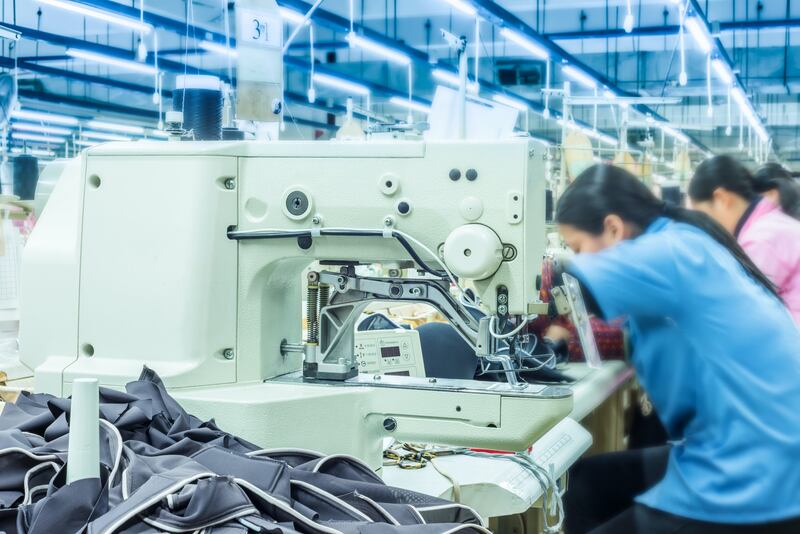
Garment factory worker | Source: Shutterstock
Global Spread of Virus Poses New Threat to Chinese Factories
Just as China's factories get back on their feet, dropping demand from their biggest trading partners around the world poses a fresh risk, with the world's second-largest economy already facing its first quarterly contraction in decades. That could feed a global vicious cycle, in a worst-case scenario adding to recessions in the US, the euro area and Japan to chop some $2.7 trillion off global output, according to Bloomberg Economics. (Bloomberg)
As Xi Jinping Visit’s Wuhan, Beijing Senses Victory
Xi Jinping's visit to Wuhan, the epicentre of China's coronavirus outbreak, is the strongest signal yet that Beijing believes it has the epidemic under control and stock markets in Hong Kong and Shanghai were buoyed by the news. Despite widespread anger at government cover-ups in the early days of the outbreak, the attention of people here is shifting to see how other countries fare in their own battles with the disease. Xi and the ruling party may well come out the other side of coronavirus not looking too bad (South China Morning Post)
China Decoded wants to hear from you. Send tips, suggestions, complaints and compliments to our Shanghai-based Asia Correspondent casey.hall@businessoffashion.com.
With consumers tightening their belts in China, the battle between global fast fashion brands and local high street giants has intensified.
Investors are bracing for a steep slowdown in luxury sales when luxury companies report their first quarter results, reflecting lacklustre Chinese demand.
The French beauty giant’s two latest deals are part of a wider M&A push by global players to capture a larger slice of the China market, targeting buzzy high-end brands that offer products with distinctive Chinese elements.
Post-Covid spend by US tourists in Europe has surged past 2019 levels. Chinese travellers, by contrast, have largely favoured domestic and regional destinations like Hong Kong, Singapore and Japan.